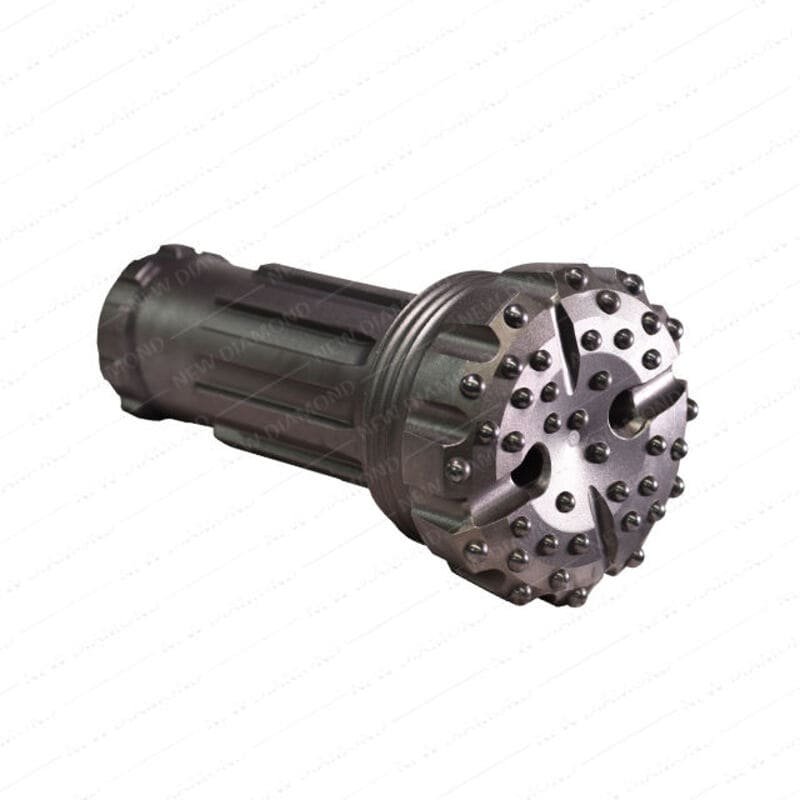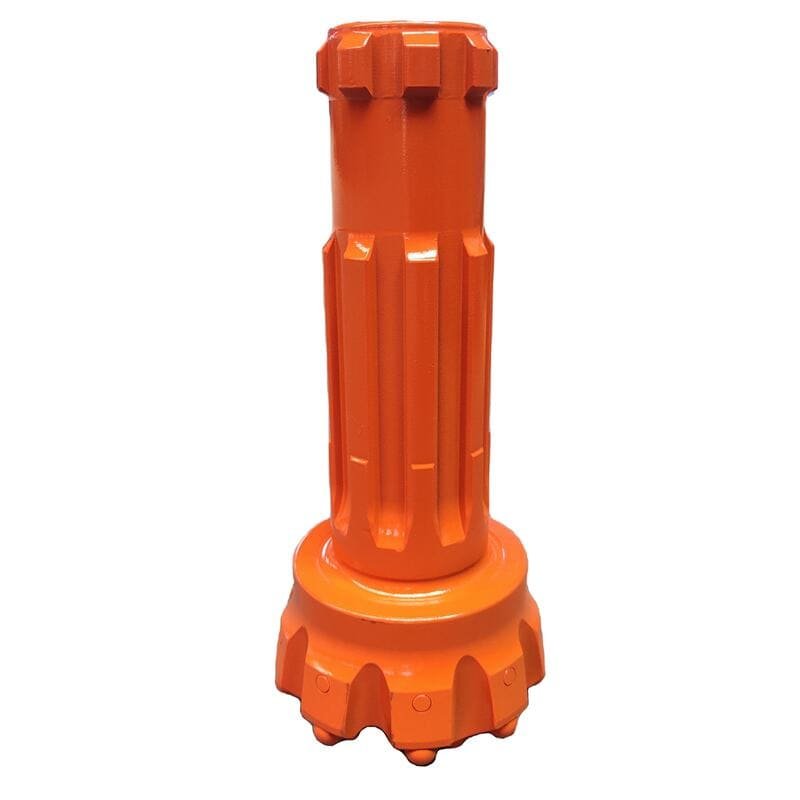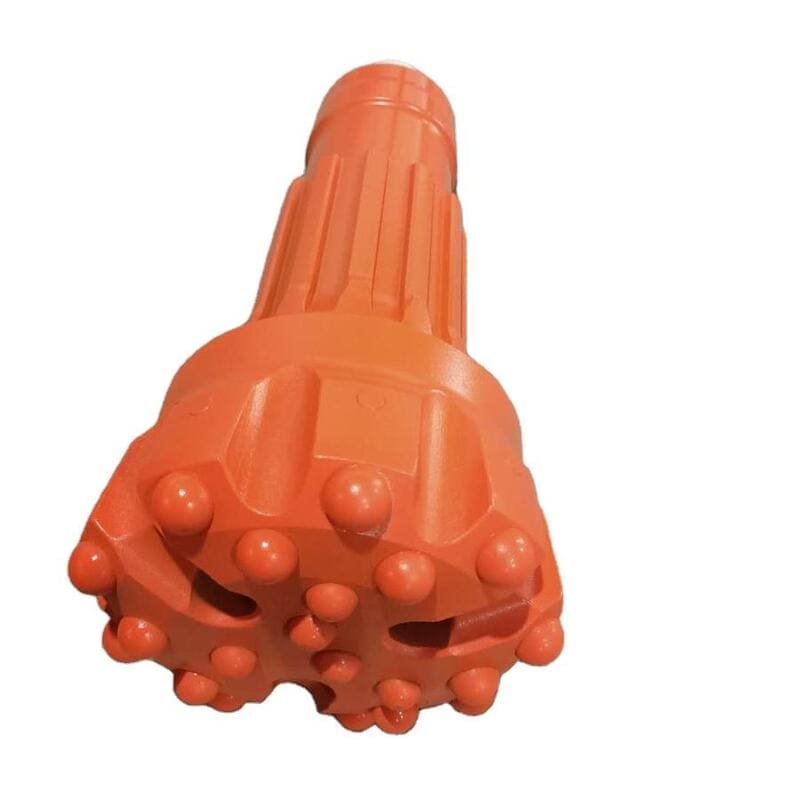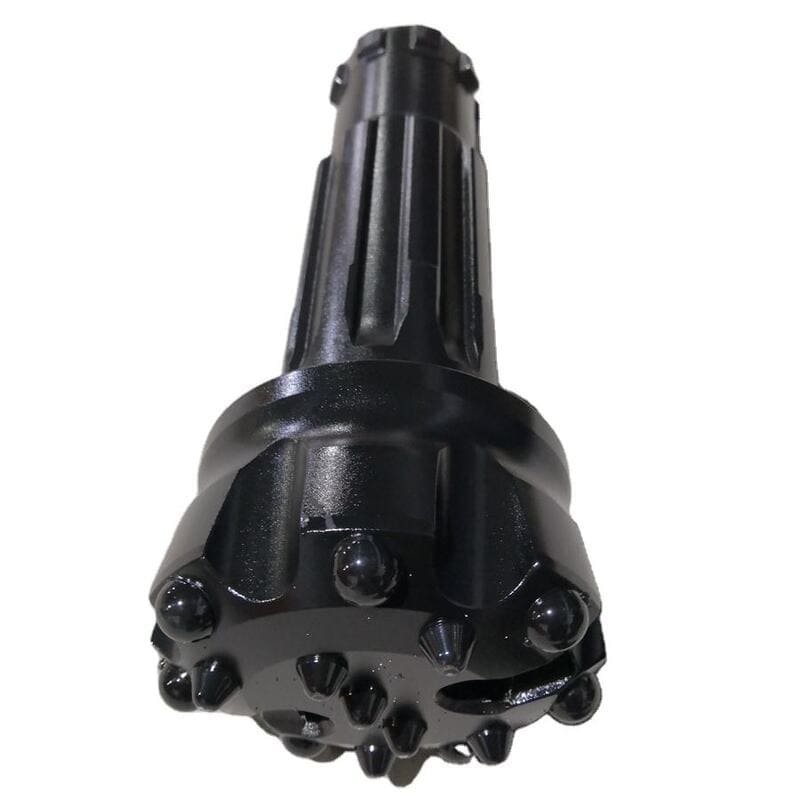Do you want to improve your drilling operations? Knowing important performance measurements is crucial! Understanding these metrics changes everything for your operations.
Evaluate the quality of DTH drill bits by focusing on important performance measures. Penetration rate, bit life, cost per foot, wear patterns and failure rate matter. These factors affect drilling equipment. Understanding them really helps in assessing performance. Achieving the best results and saving money becomes possible by paying attention to these benchmarks.
I have worked in the drilling industry for years. Key performance metrics seem overwhelming. They really do. But they do not need to be confusing! Each metric tells a story about drilling operations. A higher penetration rate transforms a challenging project into an easy task. It really does. Benchmarks such as bit life and wear patterns shape how efficiently and cost-effectively we work. It’s fascinating. Let us explore these metrics together. Discover how they elevate your drilling success.
Penetration rate is a key metric for DTH bit quality.True
A higher penetration rate indicates better performance and efficiency of DTH drill bits, making it a crucial metric for evaluation.
Cost per foot is irrelevant in assessing DTH bit performance.False
Cost per foot directly affects budgeting and operational efficiency, making it a relevant metric for evaluating DTH bit performance.
Why is Penetration Rate Crucial in Evaluating DTH Bits?
Grasping the penetration rate goes beyond numbers. This metric shows how to improve drilling efficiency. It also shows how to reduce expenses. I want to explain why this metric matters greatly to my work.
The penetration rate is very important for evaluating DTH bits. It measures how fast a drill bit enters rock layers. High penetration rates mean better efficiency. This results in large cost savings and better project timelines.

Understanding Penetration Rate
When I first joined the world of drilling equipment, I kept hearing the term "penetration rate" (PR). I remember sitting in a meeting and listening to my colleagues talk about it with excitement. I felt a bit confused but curious. As I learned more, I discovered that the penetration rate is a very important measure of how well a Down-The-Hole (DTH) drill bit works. It’s measured in feet per hour or meters per minute. This helps us know how fast we probably drill through rocks.
A higher penetration rate doesn’t just mean drilling faster. It's also about saving a lot of money and improving efficiency. Every project manager dreams of this! I’ve seen how cutting down drilling time can lead to happier clients and more profits. Changing just a few extra feet per hour truly impacts tight project timelines.
Factors Influencing Penetration Rate
Several factors affect the penetration rate of DTH bits:
- Rock Hardness: The type of rock we drill is really important. I’ve learned that knowing the site’s geology early can help us pick the right tools. Softer rocks? Expect a faster job. Harder rocks? We really need to prepare more.
- Bit Design: The bit’s design, especially the placement of buttons, is vital. I remember a project where choosing a bit with better hydraulic setups greatly increased fluid flow, letting us drill faster than before!
- Drilling Parameters: Changes like weight on bit (WOB) and speed matter a lot. Finding the right balance feels like science, but when it works, it’s honestly amazing.
Importance of High Penetration Rates
Why focus on high penetration rates? Here’s why:
- Cost Efficiency: I’ve seen projects save thousands by cutting just minutes off each drilled foot. It's a game-changer!
- Time Savings: Completing projects quickly means everyone is happy - the client is pleased and our team gets to work on the next job sooner.
- Equipment Wear: Higher penetration rates often lead to less equipment wear. This results in lower maintenance costs and longer-lasting tools.
Table: Comparative Analysis of Penetration Rates
| Rock Type | Hardness (MPa) | Typical PR (ft/hr) | Recommended Bit Design |
|---|---|---|---|
| Soft Sandstone | 30-60 | 50-80 | Standard DTH Bit |
| Medium Granite | 80-120 | 30-50 | High-performance DTH Bit |
| Hard Basalt | 150+ | 10-20 | Specialized DTH Bit |
Conclusion on Evaluating DTH Bits
Understanding penetration rates has guided me to improve drilling operations. It’s not only about numbers; it’s about succeeding in challenging geological conditions. If you’re eager to learn more about bit performance, check out this resource1.
Each time I speak about these metrics with my team, I feel proud. Together, we’re advancing the possibilities in drilling technology.
Higher penetration rates reduce drilling operational costs.True
A higher penetration rate leads to faster drilling, which significantly cuts down on labor and equipment usage costs, enhancing overall cost efficiency.
Rock hardness has no impact on penetration rate.False
The hardness of rock directly affects the penetration rate; harder rocks result in slower penetration, making this claim false.
How Does Bit Life Affect Overall Drilling Efficiency?
Do you ever think about how long a drill bit lasts? The lifespan of a drill bit affects your drilling work a lot. A short-lasting bit disrupts efficiency. A durable bit improves efficiency. Strong bits save both time and money. Discover the connection between bit life and efficiency. It's very important!
Bit life greatly influences overall drilling efficiency. It affects how quickly machines drill, how much each foot costs and how often operations stop. Bits that last longer improve drilling performance. They need less frequent replacement. This allows for smoother operations.

Understanding Bit Life
Bit life refers to the total operational hours or footage drilled before a drill bit requires replacement. A longer bit life is indicative of higher quality and durability, directly influencing drilling efficiency.
When assessing drilling operations, it's essential to consider how bit life contributes to overall performance and cost-effectiveness. Increased bit life can reduce the frequency of replacements, minimizing downtime associated with changing bits.
The Relationship Between Bit Life and Penetration Rate
The penetration rate, measured in feet per hour or meters per minute, is a critical metric in drilling efficiency. Generally, a longer bit life allows for sustained high penetration rates, leading to quicker project completions.
| Factor | Impact of Longer Bit Life | Impact of Shorter Bit Life |
|---|---|---|
| Penetration Rate | Maintains consistent high rates | Frequent drops in rates due to bit changes |
| Operational Downtime | Reduced downtime for bit changes | Increased downtime for frequent replacements |
Cost Implications of Bit Life
A crucial aspect of drilling operations is the cost per foot drilled. Longer bit life contributes to lower costs per foot because the initial investment in higher-quality bits pays off over time through reduced replacement frequency.
This relationship can be summarized as follows:
- Lower Cost Per Foot: Longer-lasting bits decrease the frequency of purchases and associated operational disruptions.
- Higher Efficiency: Extended operational periods without interruptions enhance overall productivity, leading to cost savings in labor and equipment usage.
Monitoring Wear Patterns
Regularly examining wear patterns can provide insights into bit performance. Uniform wear suggests that a bit is operating within its optimal parameters, which is a sign of effective design and quality construction. Monitoring these patterns allows operators to predict when a bit will need replacement, aiding in planning and minimizing downtime.
Failure Rates and Reliability
The failure rate of drill bits before their expected lifespan is another key performance indicator. A lower failure rate signifies higher reliability and quality, leading to reduced risks and costs associated with unexpected replacements. This reliability is essential for maintaining continuous operations and ensuring project timelines are met.
Conclusion: Enhancing Drilling Efficiency Through Bit Management
To further enhance drilling efficiency, operators should invest in high-quality drill bits and establish robust maintenance schedules that prioritize monitoring wear patterns and performance metrics. Implementing such strategies can lead to significant improvements in both efficiency and cost-effectiveness.
For more detailed insights into improving drilling operations, check out advanced drilling strategies2 or explore cost management techniques.
Longer bit life improves drilling penetration rates.True
Extended bit life allows for sustained high penetration rates, enhancing overall drilling efficiency and project completion speed.
Frequent bit replacements increase operational downtime.True
Shorter bit life leads to more frequent changes, resulting in increased downtime and reduced overall drilling efficiency.
What Role Does Cost Per Foot Play in Assessing DTH Bit Value?
Do you wonder how cost per foot influences the evaluation of DTH drill bits? Let's explore this important metric. This measure really affects drilling efficiency. It also impacts project costs. Both aspects are crucial.
Cost per foot is crucial for evaluating DTH bit value. It shows efficiency in using resources. It affects budgeting in drilling operations. Decision-making also relies on it. Resource management is very important.

Understanding Cost Per Foot
Cost per foot represents more than just a figure; it's crucial for those of us in the drilling business. When I first started, I struggled with choosing the right DTH bit. The cost per foot metric felt overwhelming. As I learned more, I saw that this number was essential for better resource management and hitting our budgets.
This important metric shows how well we use our drilling resources. I calculate cost per foot by adding up the drill bit expenses, rig operating costs, and the footage we drill. It's not just the starting price; it’s about seeing how every penny spent turns into productivity.
I remember a project where we cut our cost per foot by picking a tougher DTH bit. It reduced our initial expenses and increased our profit margins, keeping us competitive. Understanding cost per foot matters a lot for anyone in drilling operations.
Factors Influencing Cost Per Foot
Various elements affect this cost and knowing them saves us money and time:
- Bit Cost: The initial price and expected lifespan are major factors in this calculation.
- Rig Operating Costs: These continuing expenses, like labor and fuel, add up fast if not controlled.
- Footage Drilled: The distance we drill before a bit needs replacing greatly influences efficiency.
| Factor | Description | Impact on Cost Per Foot |
|---|---|---|
| Bit Cost | Initial purchase price of the DTH bit | Higher cost increases overall cost per foot. |
| Rig Operating Costs | Ongoing expenses during drilling operations | Increased operational costs raise cost per foot. |
| Footage Drilled | Total distance drilled before bit failure or replacement | Longer bit life reduces cost per foot. |
Analyzing Bit Performance
To truly learn about cost per foot, I look at other performance metrics:
- Penetration Rate: This checks how fast we drill through rock. Faster rates usually mean lower costs per foot since they save time and labor.
- Wear Patterns: Seeing how wear impacts performance helps in choosing when to replace bits, which affects our costs a lot.
By studying these alongside cost per foot, I understand our drilling operations’ efficiency better. It’s about seeing the whole picture.
Importance for Decision-Making
Decision-makers rely a lot on cost per foot to judge performance. When deciding between DTH bits, I often find a lower cost per foot means a smarter long-term choice. Yet, it’s crucial to balance this with other metrics to avoid dropping quality for quick savings.
I often remind myself of the need for good cost management strategies3. It’s about finding a balance that increases productivity while controlling costs.
Conclusion
Although this doesn’t end our look into cost per foot’s role in DTH bit value, it’s clear that this metric is key for economically judging drilling operations. Understanding its parts has been vital for making smart choices that improve efficiency and profits.
Cost per foot directly influences drilling project budgets.True
Cost per foot is crucial for budgeting, as it determines the economic efficiency of drilling operations.
Lowering cost per foot always improves bit performance.False
While lowering cost per foot can enhance profitability, it may compromise bit performance if not balanced with quality metrics.
Why Are Wear Patterns Critical for Drill Bit Performance?
When I first walked onto a drilling site, I did not know the small signs of wear on drill bits showed important information about their performance. These patterns can tell the real story of how well they work and how much they really cost. It is fascinating.
Wear patterns on drill bits are crucial. They directly affect how fast drilling happens, the lifespan of the bit and the costs of operations. Understanding these patterns helps improve drilling methods. It also really extends the life of the equipment.

Understanding Wear Patterns
Understanding wear on drill bits isn't only about seeing their condition. It uncovers secrets to increase performance and reduce costs. Each scratch and groove shows how the bit interacted with the earth. These marks tell stories that are really important for our operations.
Uniform wear patterns typically suggest that the drill bit is functioning as intended, while irregular wear can indicate design flaws or unsuitable application conditions. This insight can significantly impact both the efficiency and cost-effectiveness of drilling operations.
For instance, consistent gauge wear can lead to more efficient cutting and less friction, resulting in higher penetration rates. On the other hand, uneven wear might increase operational costs due to higher energy consumption and more frequent bit replacements.
Types of Wear Patterns
Here’s a simple look at some wear patterns I’ve seen:
| Wear Pattern Type | Description | Performance Impact |
|---|---|---|
| Button Wear | Erosion of tungsten carbide buttons | Affects the bit’s ability to penetrate hard rock efficiently. |
| Body Erosion | Wear along the body of the drill bit, which can weaken structural integrity. | Increased likelihood of failure or damage during drilling operations. |
| Gauge Loss | Reduction of the outer diameter of the drill bit’s gauge area. | May lead to instability during drilling, causing deviations in borehole trajectories. |
The Economic Implications
Understanding wear patterns greatly affects our budget, not just performance. I’ve noticed cost per foot drilled varies based on how well a drill bit holds its integrity over time.
- High Cost Efficiency: Uniform wear means fewer replacements and less downtime, reducing overall expenses.
- Long-Term Investment: Buying good quality bits that maintain wear patterns has proven beneficial for sustainable operations.
Maintenance and Monitoring
Regular checkups on wear patterns are crucial for effective maintenance plans. Looking at these patterns allows us to know when to replace a drill bit. This avoids unexpected problems and keeps us working efficiently. Using technologies such as wear pattern analysis tools4 has really improved our monitoring and maintenance in real-time.
Conclusion Without Closing
Wear patterns give us deep insights into drill bit performance. By understanding and watching these signs, we improve our drilling processes. This results in reduced costs and increased productivity in our operations.
Uniform wear patterns improve drill bit efficiency.True
Consistent wear indicates optimal performance, leading to higher penetration rates and reduced friction during drilling operations.
Irregular wear patterns increase operational costs.True
Uneven wear can cause more frequent replacements and higher energy consumption, raising overall drilling expenses.
How Can You Measure and Reduce the Failure Rate of Drill Bits?
Have you ever been in the middle of a project and suddenly a drill bit breaks? It's really frustrating. This situation happens to many people. Let's explore ways to measure and very effectively decrease the failure rate of these important tools. By doing this, people can keep drilling without any interruptions.
To measure and lower the failure rate of drill bits, track important metrics. Look at penetration rates, bit life, cost per foot and wear patterns. Regular maintenance is key. Advanced monitoring technologies are really crucial. They help spot issues early. They also extend drill bit lifespan.

Understanding Failure Rate Metrics
To effectively measure and reduce the failure rate of drill bits, it is crucial to first understand the various metrics associated with their performance. These metrics can include:
- Penetration Rate: Measured in feet per hour or meters per minute, this indicates how quickly a drill bit penetrates through rock formations. A higher penetration rate often correlates with lower failure rates, indicating better performance under challenging conditions. On my first project, I watched the penetration rate increase in soft rock, which was exciting! A higher rate often means fewer failures.
- Bit Life: This refers to the total operational hours or footage drilled before a bit needs replacement. Analyzing bit life can help identify patterns that lead to premature failures. Looking at past bit life data showed me patterns that helped stop failures in future jobs.
- Cost Per Foot: A financial metric that calculates the total cost incurred for every foot drilled, including the costs of the bit, rig operations, and maintenance. Monitoring this helps in assessing economic efficiency and use budgets wisely.
By tracking these metrics closely, operators can pinpoint areas where performance can be improved, potentially leading to a reduction in the failure rate of drill bits.
Monitoring Wear Patterns
Another essential aspect of measuring drill bit reliability involves examining wear patterns. After usage, bits should be assessed for:
| Wear Type | Description | Implications |
|---|---|---|
| Button Wear | Check for uneven button wear on the drill bit. | Indicates potential design flaws. |
| Body Erosion | Look for erosion on the main body of the bit. | Can suggest material inadequacies. |
| Gauge Loss | Measure any loss in gauge diameter. | Affects overall drilling efficiency. |
Regularly inspecting these wear patterns allows for proactive adjustments to drilling strategies and equipment selection, ultimately leading to improved durability and reduced failures. For more insights, visit wear pattern analysis5.
Implementing Preventive Maintenance
Preventive maintenance is critical in minimizing the risk of drill bit failures. This can include:
- Regular Inspections: Conducting routine checks on drill bits to identify signs of wear or damage before they lead to failures.
- Replacement Schedules: Establishing a schedule for replacing bits based on their performance metrics and historical data to ensure that bits are replaced before they fail.
- Training Operators: Ensuring that operators are well-trained in best practices for using drill bits can significantly reduce misuse and subsequent failures.
Following this maintenance routine has extended bit life and kept costs down.
Utilizing Advanced Technologies
Technological advancements have paved the way for better monitoring and analysis of drill bit performance. Consider the following tools:
- Real-time Monitoring Systems: These systems provide data on various performance metrics, allowing for immediate adjustments to drilling operations.
- Predictive Analytics: Leveraging data analytics can help forecast when a drill bit might fail based on historical performance data, enabling proactive measures.
Adopting these technologies pushed us to a data-driven method for managing bit life cycles and cutting down failures effectively. Learn more about advanced monitoring systems.
Conclusion Without Conclusion
While I’ve shared ways to measure and decrease drill bit failures, it's crucial to keep evaluating and adapting based on new findings and technology.
Higher penetration rates correlate with lower drill bit failures.True
A higher penetration rate often indicates better performance, leading to fewer failures under challenging conditions.
Regular inspections can reduce drill bit failure rates significantly.True
Routine checks help identify wear or damage early, preventing potential failures and extending bit life.
How Do DTH Bits Influence the Longevity of Drilling Equipment?
Do you ever think about how the tools we select affect the life of our drilling machines? Knowing about DTH bits is really important. These bits help us use our machines to their fullest and save money over time. Let's explore this topic more!
DTH bits are essential for increasing the lifespan of drilling equipment. They improve penetration rates, which is very important. They also reduce wear patterns, leading to less damage. Maintenance costs drop due to these durable bits. Operators, such as myself, choose high-quality bits. This choice promises better performance. It also really reduces downtime.

1. Understanding DTH Bits and Their Role in Drilling
DTH bits really change the drilling game. They deliver force directly to the bit, increasing drill speed and reducing equipment stress. I clearly remember using a DTH bit for the first time. The efficiency amazed me, especially in tough rock where my usual tools struggled. A good bit truly makes a difference.
For example, a well-designed DTH bit can achieve penetration rates of up to 60% faster than conventional rotary bits in challenging geological conditions. This increased performance translates to reduced operational time and costs.
2. Factors Influencing Equipment Longevity
Many factors linked to DTH bits are critical for increasing equipment life:
| Factor | Description | Impact on Equipment |
|---|---|---|
| Penetration Rate | Higher rates lead to less time spent on drilling, reducing wear and tear. | Increases equipment lifespan. |
| Wear Patterns | Uniform wear on bits signifies high quality, leading to less strain on rigs. | Minimizes maintenance costs. |
| Bit Life | Longer-lasting bits reduce the frequency of replacements, limiting downtime. | Enhances reliability and longevity. |
| Cost Per Foot | Efficient drilling reduces overall costs, allowing for better budgeting. | Supports sustainable operations. |
3. The Importance of Bit Selection
Choosing the right DTH bit is very important. It greatly affects how well your whole setup works and lasts. Quality bits cut down vibrations and shock on the rig, which leads to:
- Longer component life: Fewer repairs and replacements needed.
- Reduced maintenance costs: Less wear on extra parts.
For more tips on the best bits for your needs, read this detailed guide6.
4. Maintenance Practices for Prolonged Equipment Life
Maximizing equipment life with DTH bits relies on good maintenance:
- Regular inspections: Watching wear patterns prevents sudden failures.
- Proper lubrication: Well-lubricated moving parts run smoothly, cutting friction.
- Quality replacement parts: OEM or high-quality aftermarket parts improve performance and durability.
These practices help keep equipment running well and extend its lifespan.
5. Economic Considerations
DTH bits affect not just performance but also real economic factors:
- Lower replacement frequency: Good bits reduce spending on new ones and less downtime.
- Cost efficiency: Lower cost per foot drilled keeps projects profitable.
Explore this financial management resource for more on budgeting for drilling work.
DTH bits improve drilling efficiency by 60% over rotary bits.True
DTH bits can achieve penetration rates up to 60% faster than conventional rotary bits, enhancing operational efficiency in challenging conditions.
Higher penetration rates increase wear and tear on equipment.False
In fact, higher penetration rates reduce drilling time, leading to less wear and tear on the drilling equipment, thereby extending its lifespan.
Conclusion
Explore essential metrics like penetration rate and bit life to evaluate DTH drill bits effectively, improving drilling efficiency and reducing operational costs.
-
This resource offers valuable data on optimizing drilling operations, ensuring you maximize efficiency and minimize costs. ↩
-
Explore this link to uncover practical tips for extending bit life, ultimately enhancing your drilling efficiency. ↩
-
Discover strategies to optimize your drilling operations by learning about cost management techniques related to DTH bits. ↩
-
Discover how monitoring wear patterns can lead to better drilling efficiency and lower costs. Click here for expert insights. ↩
-
Clicking this link will guide you through effective strategies and tools for measuring drill bit performance, enhancing your understanding and capabilities. ↩
-
Discover how the choice of DTH bits can enhance your drilling equipment's lifespan and improve operational efficiency. ↩








